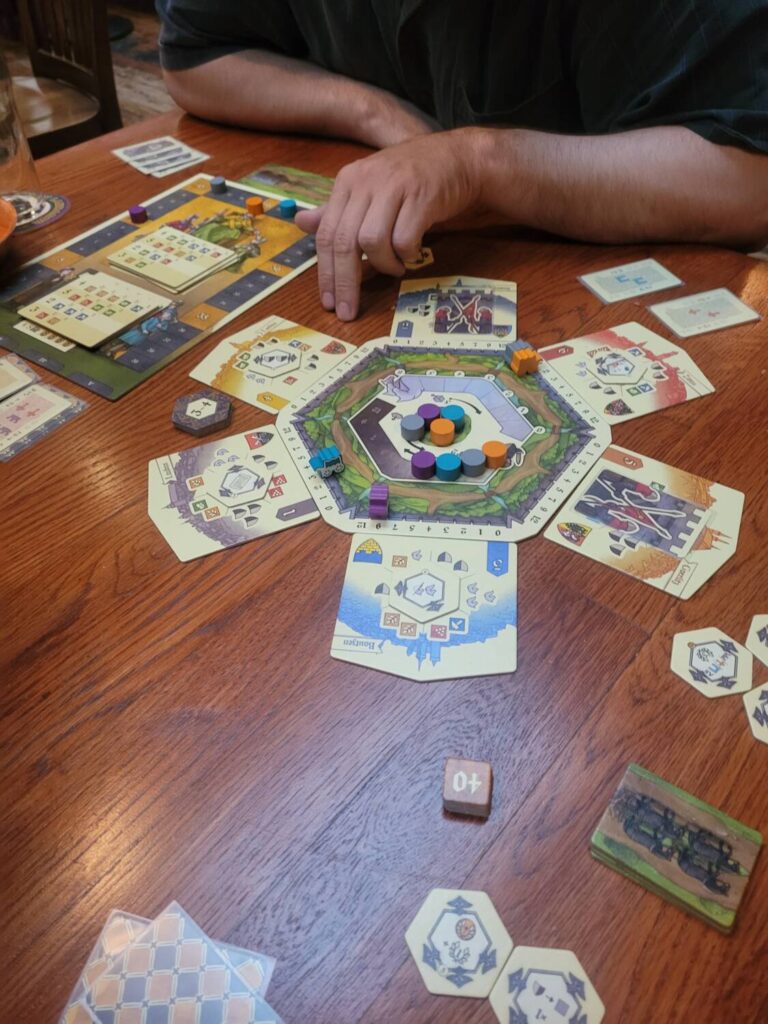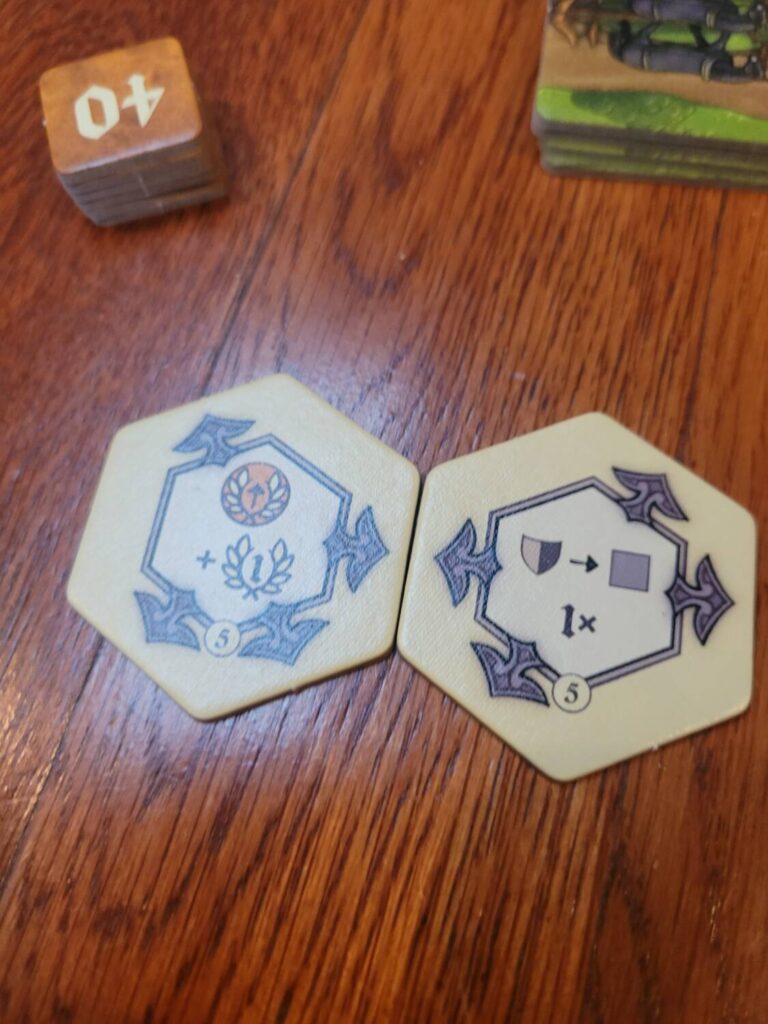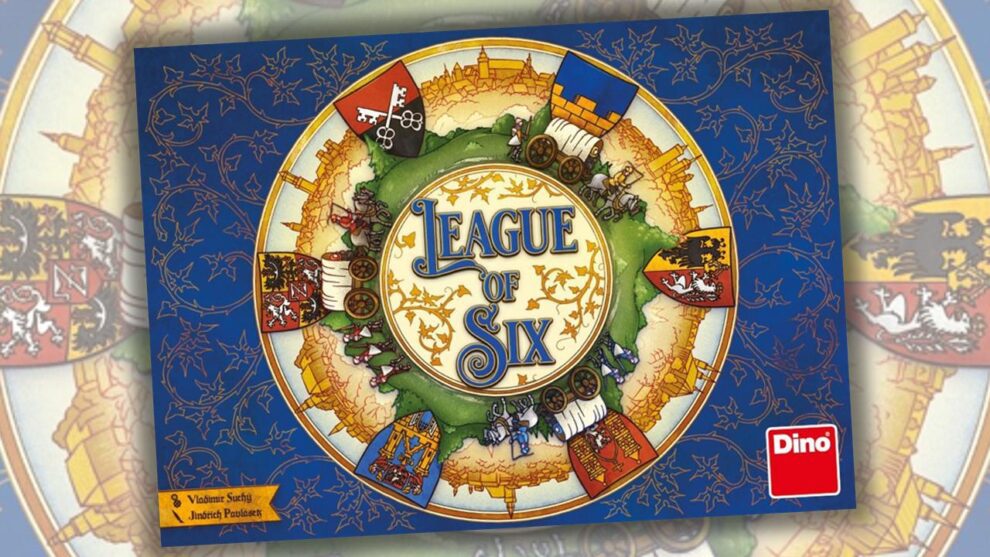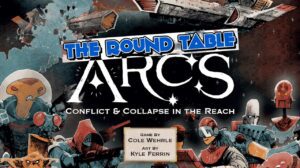Disclosure: Meeple Mountain received a free copy of this product in exchange for an honest, unbiased review. This review is not intended to be an endorsement.
I always want to try out a Vladimír Suchý design, but I’m typically disappointed. His games offer unique mechanics and interesting ideas that draw me in, but his continued emphasis on creating diligently balanced systems often leaves me feeling a little empty. League of Six was his first published design, now receiving a “complete edition” which includes an expansion, but fear not, this is a beige euro through and through — and you know that your boy loves a beige eurogame.
On top of its beige-y-ness, it features a spin on one of my favorite mechanisms, “pay the auctioneer.” It’s an enjoyable game, and though I have some caveats, I’m happy with the time I’ve spent with it, and I find it to be one of Suchý’s more compelling designs. The debut album is often the rawest and, sometimes, the best.
Overview
League of Six casts you as history’s most exciting protagonist — the tax collector. The board has six different towns, each of which has a small track beneath it ranging from 0 to 12. Players place their little horsey meeples first on the “0” space of a town, which represents their bid for the tile that’s available in that town as well as a selection of resources. Other players can then choose to go to another town, paying guards (the game’s currency) to travel to different sections of the board. If they choose to go where another player is, they place their meeple on a higher bid, and the responding player can either receive a payment from the higher bidder and move on, or make a higher bid themselves. Once one player pays the other, the paid player continues moving and bidding until each player has exclusive access to a town. If you’ve played games like Nefertiti, Stockpile, Homesteaders, or Cyclades, you’ll be familiar with this auction mechanism.

After all is said and done, players rearrange their turn order based on who made the highest bids, and then they use the tiles that are on each town to get some resources. The tiles have arrows and you arrange the hexagon such that the arrows point at the resources you want on the town tile in question. The tiles themselves grant powers which last for the rest of the game as well.
Then, players go to the market. I guess part of being a cool tax collector is you get to do medieval embezzlement for points? There’s an array of resource spaces, and starting with the player who made the highest bid earlier, a player selects a row in the array, and every player who can contribute resources must contribute resources to this row, gaining points. If a row is filled, the player who selected that row for filling gets a bonus, in the form of additional points, or cards that help them compete for one of three majority competitions at the end of the game. 6 rounds of that, and you’re done.
Close…perhaps too close…
Suchý recently posted a designer diary on BGG about the design of one of his newest games, Resafa, and in the section about balance, he says something relevant to my primary criticism of League of Six:
“Given the large number of games, you have to attract players at first sight (that is, first play), and if in that first playthrough something doesn’t seem right to them — whether the balancing of the game or something else — it could lead to easy dismissal of the game, despite the game working well but being unable to “show” all the nice details until after more than one play. If the game feels off, it may not get another chance.”

He later notes that he wants his games to be rewarding to both experienced players and beginners.
I’ve never kept a Suchý game in my collection, primarily because there doesn’t seem to be much of a difference between skilled play and unskilled play in his designs. Some people might get satisfaction out of trying an obtuse strategy and the game accommodating it, but I’m far more interested in a game that pays out rewards based on creativity, rather than balance. If it doesn’t matter which strategy is pursued as long as it is coherent and you end up on the board, that feels unsatisfying. If there’s anywhere that skill should matter, it’s an auction game. Auction mechanics are fundamentally about collectively determining the value of various properties within a game, and providing punishments and rewards for incorrect/correct valuations. Games like Modern Art, Winsome Games (Chicago Express, South African Railroads), Skyrise, and Oasis excel at this. League of Six features a points-for-money mechanism where you can overbid and pay points. On the surface this would seem to offer plenty of potential pitfalls, but ultimately, unless you behave incredibly irrationally, it’s really tough to make a big mistake and lose big. In all of my games, scores remained relatively constant, and players were usually within a 10 point spread.

I think this is because everything is pretty tightly bound together. While some rounds will have players jumping a little farther ahead than their competitors, points are usually balanced out by both the end game scoring conditions and the overall number of resources a player can gain and sell over the course of the game. It feels like the game is balancing the auctions, rather than the players, which ultimately makes this experience decent but not great.
However, if you’re a fan of Suchý’s designs, you’ll find a lot to like here, and it’s a clean, compelling package for fans of “nice” auctions. And Taxes.












Add Comment